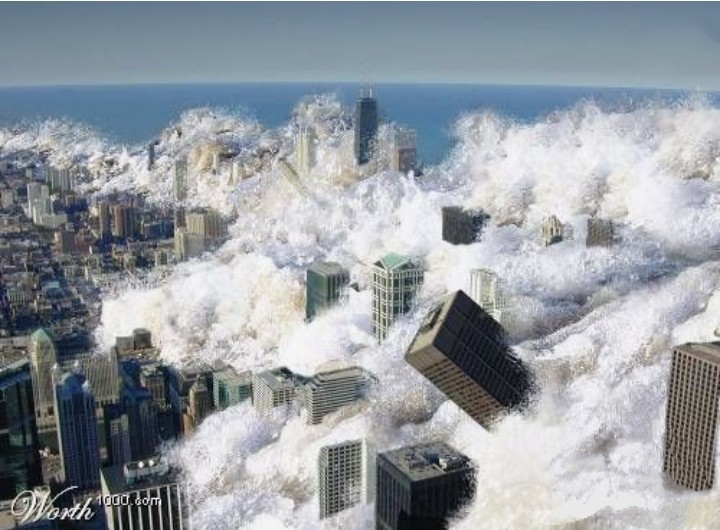Physical map of Asia
Asia Continent:









* Asia is largest and most populous of seven continents.
* Total 48 countries ( Taiwan, Palestine excluded)
* It is home to nearly 60% of world population
* Area - about 4,45,79,000 sq km
* World's one - third total land area and 8.7% of the Earth's total surface area.
* Population density is 100 per sq km
* Asia is bounded by Oceans from three sides, the Pacific Ocean on the east, the Indian Ocean on the south and Artic Ocean on the north
* It extends from 10° south to 80° north latitude and 25° east to 170° west longitude
Boundaries of Asia - Africa boundary:
* The boundary between Asia and Africa is the Red sea, the Gulf of Suez, and the Suezcanal this makes Egypt a transactionental country with the Sinai Peninsula in Asia and the remainder of the country in Africa.
Asia - Europe boundary:
* It is separated from Europe in the west by Ural Mountains and Caspian Sea, the Cacasus Mountains and black Sea.
* Europe and Asia - 2 continents - single tectonic plate.
* Landmass that they from togather - Eurasia - Super continate
* Countries - Russia, Kazakhstan, Turkey, Georgia and Azerbaijan Straddle these two continents.
Asia - Oceania Boundary:
* Australia and New zealand are part of the Oceania continent, and are on separate tectonic plates to Asia.
* The border between Asia and the region of Oceania is usually placed some where in the malay Archipelago ( Group of Island)
* The moluccas Islands in Indonesia are of ten considered to lie on the border of southeast Asia with Papua New Guinea, to the east of the Islands, being wholly part of Oceania.
Asia - North America boundary:
The Bering Strait and Bering Sea Separate the land masses of Asia and North America as well as forming the International boundary between Russia and the U S.
This National and continetal boundary separates Diomede Islands in the Bering Strait, with Big Diomede in Russia and Little Diomede in the U S.
Main political Region:
1) North Asia
2) Central Asia
3) Western Asia ( The Middle East or near East)
4) South Asia ( Indian Subcontinent)
5) East Asia ( Far East )
6) Southeast Asia ( East Indies and Indochina)
Seas Around Asia:
East Asia-
1) Sea of Japan
2) Sea of Okhatska
3) Philippines Sea
4) South China Sea
5) East China Sea
6) Yellow Sea
7) Baring Sea
8) Bay of Bengal
West Asia -
1) Arabian Sea: a. Purzion Gulf, b. Gulf of Adin
2) Red Sea
3) Caspian Sea
5) Mediterian Sea
Main Physical Regions:
(Five major divisions)
1) The Northern Lowlands
2) The Central Mountains
3) The Southern Plateous
4) The Grenal River Valleys
5) The Island Group
The Northern Lowlands:
* These are located in North Asia bordering Arctic Ocean
* The Northern Lowlands of Asia extend from the Ural Mountains in the west up to the Bering Strait in the north - east.
* They from the world greatest continuous plains. Three Rivers which flow north wards into the Arctic Ocean - OB, Yenisey and Lens, have together built this plain. These Marshy and Swampy Lowlands are also called as the Great Siberian Plain
* The Turant Plain is the Lowland located around the Aral Sea ( central Asia)
* It is drained by two rivers- Amu Darya and Syr Darya
* It is an area of Inland Drainage
The Central Mountains :
* South of the Northern Lowlands Great belt of flod mountain
* Mountain chains run out in different directions from Pamir Knot ( in south of central Asia) West - Hindukush: south west - Suleiman Range, North- Tian Shan, East - Himalayas, Karakoram and Kunal.
* The plateau of Tibet enclosed by the Himalayas and Kunal, is the largest and highest Plateous of the world.
* Mount Everest in the Himalayas is the highest peak in the world
* The vast cool desert of Gobi is in this region.
The Southern Plateous:
* The Southern Plateous lies in to the south of the central mountain belts.
* Three major Plateous
- Arabian Peninsula
- Plateous of Shan and the Plateau of Yunnan in China
-Plateous of Indian Peninsula
Arabian Peninsula:
* It is a peninsula in western Asia situated between Asia, Europe and Africa on the Arabian plate
" The Arabian Plateou rises steeply. It is a dry desert region.
Plateou of Indian Peninsula:
* The plateau of Indian Peninsula rises steeply along the coast of Arabian Sea and becomes gentle towards the Bay of Bengal.
Plateou of Shan and Plateou of Yunnan
* This Plateou too has steep western slope and is drained by the Salween Mekong and SI Kiang rivers.
The Great River Valleys:
The Great River Valleys are known as the cradle of civilization as many civilizations have developed in these valleys. This region has many famous rivers which have their origin in the snow capped mountains. Four important valleys in the region are -
The Trigris Euphrates valley
- the Tigris Euphrates valley in Iraq which is also known as the Mesopotamian Lowlands.
The Indus and Gange - Brahmaputra valley:
The Indus valley: is formed by river Indus and it's five Tributaries - Jhelum, Chenab, Ravi, Beas and Sutlej.
The Ganga Brahmaputra valley: has been formed by the rivers Ganga and Brahmaputra and other tributaries.
The Great plains of China:
The Great plains of China is formed by three large rivers - Namely Huang the ( yellow river) , Yangtze and SI kiang.
* Some other valleys in the region are the Mekong valley in the Indo China , Amur valley etc
The island Group:
* To the east and South East Asia, there are number of Island countries.
* The largest Archipelago in the world is Indonesia Archipelago - included island of Borneo, Sumtra. Java, Sulawesi, Bali, and Timor.
* The Lakshadweep Islands in the Arebian Sea and Andamans in the Bay of Bengal belong to India.



Comments
Post a Comment